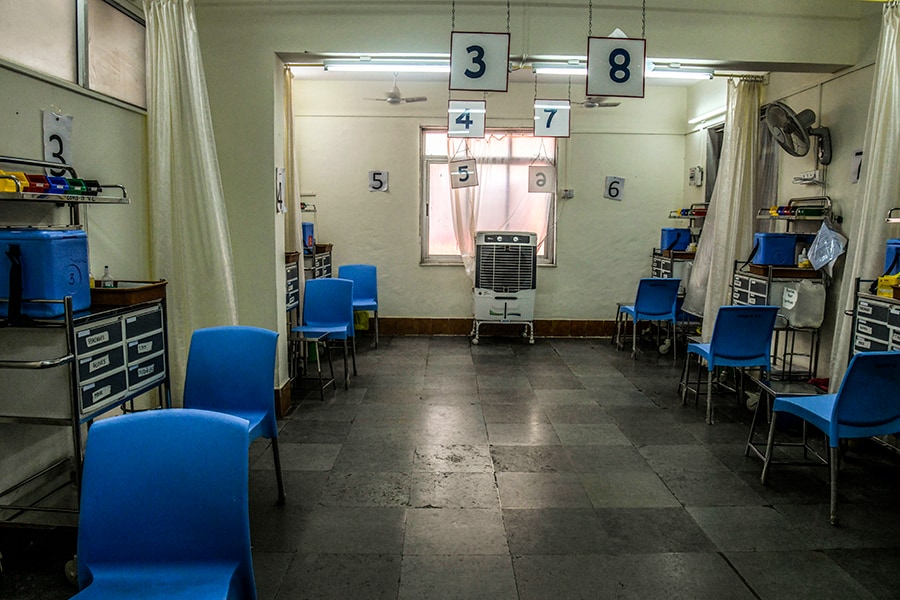
Mass vaccination, India's Covid-19 escape route, poses a giant challenge
India is the world's leading producer of vaccines, but over the past week has also been the global leader in Covid-19 deaths, and it is not at all clear that the country can vaccinate itself out of the crisis
 A deserted COVID-19 vaccination center in Mumbai, India, April 15, 2021. Overwhelmed by the pandemic, the country that is a leading maker of vaccines is facing its own crisis at home — and that may be a problem for a world in need of vaccine.
A deserted COVID-19 vaccination center in Mumbai, India, April 15, 2021. Overwhelmed by the pandemic, the country that is a leading maker of vaccines is facing its own crisis at home — and that may be a problem for a world in need of vaccine.
Image: Atul Loke/The New York Times
NEW DELHI — India is the world’s leading producer of vaccines, but over the past week it has also been the global leader in COVID-19 deaths, and it is not at all clear that the country can vaccinate itself out of the crisis.
The answer to that question is a matter of urgent interest in India, where a second wave of infection has left a tableau of death and despair, but it may also have big implications for other countries battling the pandemic.
India is a critical supplier in the global effort to vaccinate people against the coronavirus, and its struggles to roll out enough vaccine for its own 1.4 billion people are being closely watched abroad.
In Africa, especially, ripples from the Indian crisis are already being felt.
Health officials on the continent who had been counting on vaccine shipments from India learned just weeks ago that they may not be arriving when expected. India’s prime minister, Narendra Modi, suspended exports of nearly all 2.4 million doses of the AstraZeneca vaccine produced daily by its top vaccine company, the Serum Institute of India.
©2019 New York Times News Service




